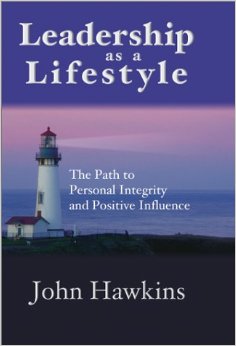
Leadership As a Lifestyle by John Hawkins
The title Leadership as a Lifestyle reveals the central theme of the book. Life is not meant to be compartmentalized. Hawkins insists that we are human beings, not just human doings (15). Instead, he contends that life is like a adventure (108), a balanced life in which a person is faithful in all spheres of influence (21). Leadership therefore, involves coming to know and experience God (27).
I thought the three powers of leadership was very insightful (41). Hawkins contrasts the first two sources of power (coercion and utilitarianism) with life. He goes on to explain that this source of power can be best accomplished when a leader uses his skills as a coach or mentor, and not just an authoritarian (44).
After reading this, I discovered that perhaps one of the best roles of the pastor is to help “coach” or “mentor” people to do their best and be their best in life. Many times people expect pastors to preach against, and rebuke people for their mistakes and sins. But my personal experience has found that this form of preaching becomes a form of coercion power. Hawkins rightly observes that in the long-term, the life source of leadership power will be more effective in the long-term. The connecting point of leadership is credibility (48). I have found this insight to be true. Both the congregation and the leader must build trust with one another. The result of this influence of a coach or mentor is fruitful lives (51). The notion that a person should use ethical influence (159) – meaning in the case of a pastor that he lives what he says he believes, is something that needs to be taught again in seminaries and in schools.
Hawkins defines his Biblical foundation (14), references Scriptures at times (124-125), and devotes an entire chapter to the need for God (93-110). In the beginning of the book, Hawkins reveals his hermeneutical foundation. He explains that the spiritual should not be separated from the secular. God directs all human actions. God works His purpose through and in reality. This separation problem occurs again later in the book (100). He says that postmodern society has divorced God from culture. He attempts to present the case that a leader cannot separate God out of our lives (104) He critiques the methods that people use to seek God, as if we can search for God in the same way we surf the Internet, going from one god to another (106). He ends the critique by sharing a set of steps that someone can use to evaluate their journey to God (109-110). This is Hawkins’s altar call for the reader.
This book does to merge the secular and the spiritual and for making leadership a way to come closer to God. However, the book does not go far enough in acknowledging how we are able to come to God – namely through Jesus Christ and what He has done on the cross. Sadly, while this book does bring secular leaders closer to God, it does not go far enough to let them know that they can only come to God through His Son Jesus Christ. Apparently, for Hawkins, the Ten Commandments, love, grace, and forgiveness are good enough.
This book attempts to secularize the faith just enough to give people a taste of God, but it never reveals the power that make that faith work. Unlike Blanchard, who accepts the need for Jesus Christ as our leader, Hawkins does not share that here. In other words, this book is just another religious leadership book.
Having said my point of departure from the book, I do believe this book could be useful, even for evangelism. This book would be an excellent first resource for a church who wants to share Jesus without seeming to be overly religious. He quotes authors like Stephen Covey (a Mormon), and Ken Blanchard (a Christian), but Hawkins clearly wants people to come to know God. While this book does not address the need for Jesus Christ, it does address the basic problem of the transcendent God. One must first understand God’s power and transcendence before one can understand one’s brokenness. This book addresses that problem.
If the person is on a life adventure (as the book proposes), then this book would help a person who views life as secular and spiritual to see that they need God in their personal lives in all areas of influence. For someone who does not understand the church, it may be helpful.











